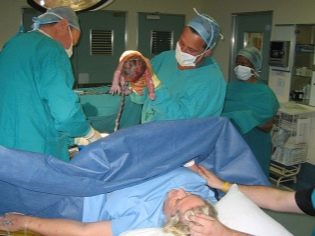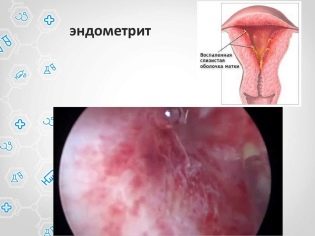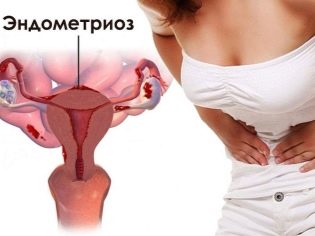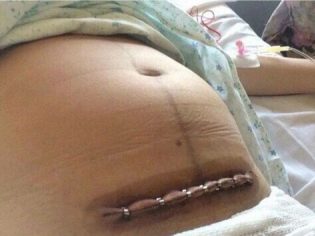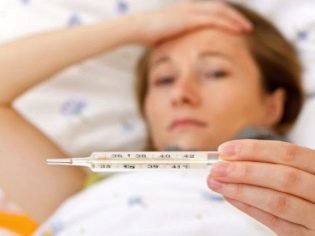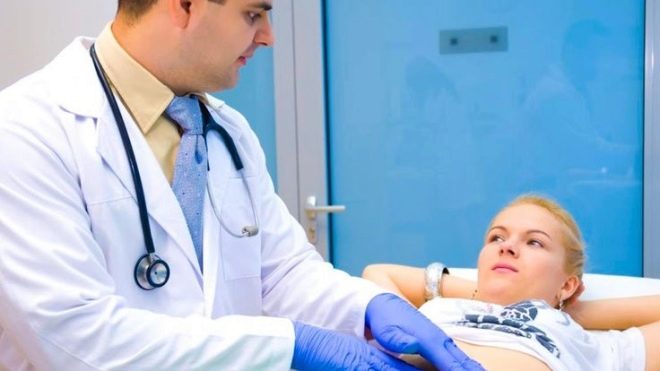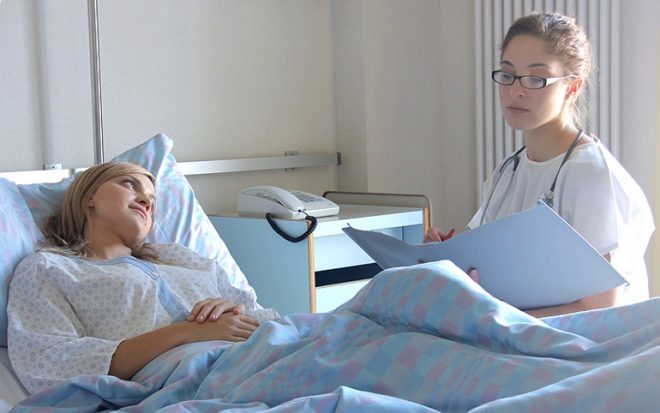Why did the temperature rise after cesarean section and what to do?
An increase in body temperature after any surgical operation is a quite understandable and normal phenomenon. Caesarean section is no exception. But fever can also be a symptom of severe complications, and therefore a special, more attentive attitude is needed for temperature. In this article we will discuss the most common causes of fever after surgery, a few days later or even weeks after it, and also tell you what to do in this case.
Physiological causes
Temperature after caesarean section is a normal reaction of female immunity to a surgical invasion. Normally, it should be short-lived and be at subfebrile values - 37.0-37.8 degrees. With a normal course of the earlier postoperative period, the temperature returns to normal within 1-2 days after surgery.
Childbirth on the surgical table can not be considered natural, physiological. Therefore, for a woman's body, caesarean section is a big stress, the reaction to which is usually a slight rise in temperature in the first 24 hours after the intervention.
But the adaptive abilities of the organism are quite high, and pretty quickly perceives everything that happens, including the presence of foreign bodies (internal and external suture-stitches), and the thermoregulation becomes normal.
Pathological causes
High fever, which rose almost immediately after surgery, may be a sign of infection. If the thermometer has risen to 38 degrees and higher in 3-4 days after the operation, this can also be a sign of infection.
Caesarean section is always associated with possible complications, and this will not go anywhere. They can arise both during the operation and after it. Accession infection is considered one of the most serious complications, it can be fatal for a woman. Additional symptoms of infection other than high fever:
- abdominal pain;
- highlighting of an unusual color, consistency, with an unpleasant smell;
- suppuration of postoperative scar, discharge from it.
The most frequent complication is inflammation of the functional layer of the uterus - the endometrium. It is called endometritis (when endometrial cells are brought into neighboring tissues by endometriosis), endometritis of the internal scar on the uterus can also develop.
The probability of an infectious complication is, according to experts, from 0.7 to 5% of cases. But this is quite averaged data. More often this happens in hospitals where the sanitary requirements are not given much value. Today in Russia, most operating rooms and intensive care units are equipped with modern equipment, sterile instruments are used (disposable, which should not be boiled after use), modern antiseptics and antibiotics are used. For this reason, the probability of infection of the puerperal is reduced to 0.7-1.5%.
After a cesarean section, a woman should strictly follow the recommendations of doctors. If they are ignored, there may be other complications that will also have an effect on fever and 2 days after surgical delivery, and a week later, and a month later.
Among other reasons that may be manifested by fever are the following (at any time after the operation):
- improper or inadequate care of external seams, inflammation, suppuration;
- catarrhal disease, acute respiratory viral infection, influenza (after a cesarean section in women, immune protection is reduced along with inevitable blood loss);
- autoimmune processes in the body of the puerperal (suture surgical material, which sewn incisions in the uterus, muscle tissue, is not perceived by the immune system, does not survive, is rejected), while the temperature rises at 37.0-38.0 degrees and holds for a long time;
- endocrine disorders (cesarean section terminates the pregnancy suddenly, contrary to the laws of nature, and therefore hormonal failure is not excluded) - the temperature is a sign of hormonal imbalance:
- exacerbation of a chronic disease in the postoperative period or the occurrence of an acute disease (pyelonephritis, nephritis, adnexitis, pancreatitis, and others) - due to a strong decrease in immunity, the disease manifests itself, which was previously characteristic of the puerperal, or the disease appears for the first time for the same reason and proceeds, respectively , acutely.
In addition to all of the above, the cause of the increase in temperature after cesarean section may be a stagnation in the mammary glands and their inflammation. Often, such a complication occurs 7-10 days after delivery, when lactation is in a state of active development.
According to the time of appearance of the temperature can be divided common causes of its development:
- in 2-3 days - acute wound infection, infection, sepsis;
- after 5 days - endometriosis, pneumonia (with coughing and respiratory manifestations);
- in 2-4 days - acute cystitis (inflammation of the urinary tract due to the establishment of a catheter during the operation and the first day after it);
- 7-8 days - pyelonephritis;
- 10-20 days - mastitis, mastopathy;
- Anytime - flu, ARVI.
What to do?
If the temperature rises after a cesarean section, it is necessary to discuss this with your doctor. As you can see, there are a lot of reasons that can lead to its growth. They are all serious and require treatment.
After the operation, the temperature in the maternity hospital is measured 3-4 times a day. And it is very important that physicians can put together the correct idea of the course of the early rehabilitation period. Some women are not too responsible and serious about measurements, forget to put a thermometer or do it wrong. As a result, some complications at an early stage can go unnoticed and become apparent even when the inflammation is quite serious.
In the maternity hospital and after discharge, a woman needs to learn how to correctly measure her body temperature. The thermometer, if it is placed in the armpit, must be isolated from the mammary gland located nearby.
Milk production begins and the mammary glands are usually hotter, because of this, the temperature may turn out to be too high. Between the thermometer and the mammary gland it is recommended to place a thick towel folded 4-6 times for the time of measurement. You can measure the temperature in the mouth, in some maternity hospitals, this method is considered the most accurate and desirable.
If you notice a temperature above 38.0 degrees on the second or third day at the maternity hospital, Be sure to report this to the midwife on duty. She will invite the doctor on duty, the woman will be examined, blood will be taken for analysis, an ultrasound scan will be done and they will be able to determine the cause of the increased heat. Further treatment will depend on the specific cause - antibiotics are used for all types of infectious inflammations, they are also prescribed drugs to treat the underlying disease.
If the temperature rose at home after discharge, after a while, a chill appeared, then, without wasting time searching for additional symptoms, the woman needs to call an Ambulance or go to the nearest hospital by personal transport. This should be done as quickly as possible.Many inflammatory processes, when they are extremely neglected, can lead to systemic sepsis - inflammation of the blood, and in sepsis, the prognosis for saving a woman’s life is less optimistic.
On the characteristics of the temperature after childbirth in the next video tells the specialist.



